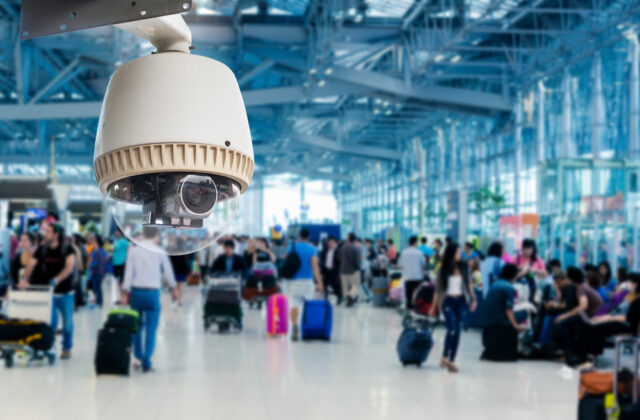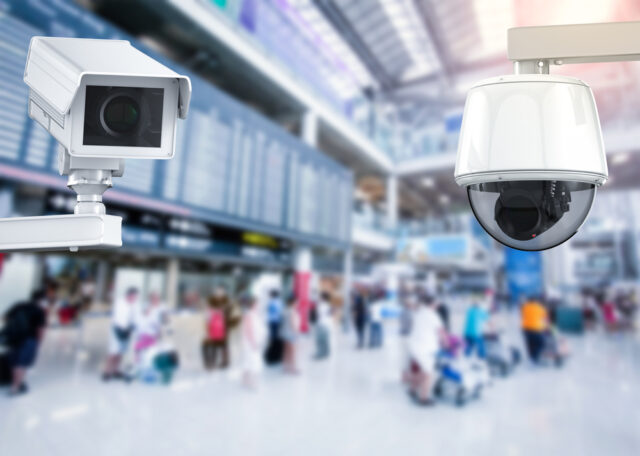
Video surveillance at airports. Specificity and functionality
Video surveillance at airports. Specificity and functionality
As a strategic enterprise and socially significant facility, each airport needs special control from a safety perspective. Constant movement, crowds of people (including personnel), and large areas contribute to a high-risk level.
The article will tell you details about the specifics and functionality of video surveillance systems at airports. We always have only helpful information. Read to the end.
State requirements
Video surveillance at airports is regulated by the Decree of the Russian Government No. 969, signed in 2016 by Dm. Medvedev and entered into force in March next year.
Chapter 5 of this document describes the requirements specific to the functionality of technical hardware video monitoring tools and intelligent video analytics tools.
The goal is to ensure transport security and the perimeter of the terminal, the adjacent territory, the building, and inside the airport building.
Specificity of video surveillance
Airport security using video cameras and video analytics is specific for several reasons, such as the presence of:
- different services responsible for the object. We are talking about the border, customs, transport security, security, and other structures, each of which determines its requirements for the video control system;
- a large area subject to monitoring and protection;
- constant fast and voluminous flow of people and vehicles;
- a large number of employees;
- a variety of technical and hardware tools that interfere with the operation of video cameras;
- high state security requirements.
Required functional
Unfortunately, there is no single universal tool (video monitoring and video recording equipment) that would thoroughly combine the necessary options for working at the airport. Therefore, Decree No. 969 provides for the use of various means of a security television system (chapter 5, paragraph 30) and the functional properties of video signal sources (chapter 5, paragraph 31).
Image quality as a determining factor
A CCTV camera (airport) must produce high image quality suitable for detailing the following processes:
- recognition of a person, his face, and trajectory. Up-to-date information is in the article “TOP-7 face recognition features in 2021”;
- identification of state license plates of vehicles (in auto and manual mode).
The goal is to obtain a complete situational picture of the protected area using deep and machine learning algorithms.
Radar options
The optimal solution for airport surveillance is the use of integrated systems, including video surveillance + radars.
Today, long-range radars are actively used for video monitoring of the airport perimeter and its airfields. They recognize an object (a person, a vehicle) at a distance of 900-1000 m. At the same time, the radar does not have video verification capabilities, and the burden on the operators and the security service is high.
The use of integrated solutions (panoramic PTZ camera + radars of different ranges) will reduce the number of false alarms and reduce the amount of equipment in the system.
Panoramic monitoring capabilities
Nowadays, the practice of “stitching” frames from several video cameras to obtain one airfield picture is widely used. In this case, the operator does not need to switch between airport video cameras to track a moving object.
Response
A couple of years ago, data from video surveillance was used exclusively for investigating events after they happened.
Today, the monitoring system is being built in real-time mode for instant security response.
The next evolutionary step is predictive analytics, which is capable of forecasting. Innovative algorithms are endowed with the ability to “learn” based on:
- behavioral patterns;
- face / emotion recognition technologies;
- identification of left items;
- video recording of parameters of deviation from the specified conditions (route, trajectory).
After a comparative analysis, the system predicts an undesirable incident and notifies the operator about the need to make an appropriate decision.
Video analytics as a necessity of the 21st century
The main functions of video analytics in demand at the airport:
- interactive search for people by photo;
- intellectual search for lost children;
- detection of citizens and recognition of their faces;
- tracking;
- counting visitors in the facility;
- determining the length of the queue and maintaining social distance;
- recognition of license number plates;
- expedited baggage claim;
- control over the work activity of staff and employees;
- detectors of abandoned things and loud sounds;
- detector of possible sabotage.
The benefits of using intelligent and self-learning algorithms in video surveillance are reduced resource requirements, long-term savings, and airport flexibility.
Innovative products designed for implementation at airports must be simple to operate and integrate easily with other security controls.
Conclusion
The global airport security community is concerned about one question: “how to reduce risks to passengers and staff in a busy traffic environment and increase the level of overall safety?” High-tech solutions with vision, hearing, and intelligence come to the help.








